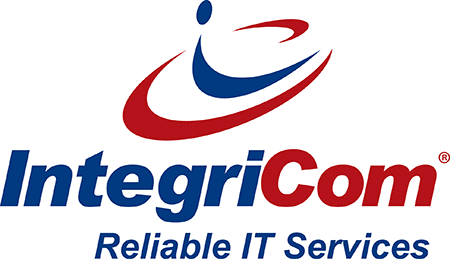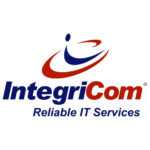In today’s fast-paced digital landscape, businesses can no longer afford to lose time to repetitive IT tasks and unplanned downtime. Managed IT services have emerged as a strategic solution for organizations seeking to eliminate busywork, enhance productivity, and maintain a competitive edge. By automating routine operations, delivering proactive system monitoring, and ensuring robust data security, managed IT providers enable teams to focus on high-impact initiatives that drive business growth.
This blog explores the top strategies through which managed IT services reduce operational friction, boost efficiency, and align technology management with core business objectives, transforming IT from a cost center into a productivity engine.
Key Takeaways
- Managed IT services automate routine tasks, reducing busywork and allowing teams to focus on strategic initiatives, which enhances overall productivity.
- Proactive monitoring and regular maintenance are crucial for preventing downtime, identifying security threats early, and ensuring smooth IT operations.
- Access to modern tools and technologies through managed IT services empowers businesses to improve operational efficiency and adapt to market changes effectively.
Streamlining Routine Tasks
One of the primary ways managed IT services enhance employee productivity is by automating routine tasks. Automation can improve service quality by following predefined workflows, leading to more consistent customer experiences. Automation enables IT teams to respond more swiftly to customer inquiries, significantly boosting overall productivity.
There are countless managed IT services benefits, but the biggest win is how they transform tech from a cost center into a strategic asset. With managed IT services, businesses enjoy 24/7 technical support, predictable monthly expenses, and access to experienced IT professionals who proactively prevent downtime and resolve issues before they escalate. It’s an efficient, scalable solution that supports long-term growth.
Remote assistance tools are another critical component of managed IT services. These tools enable technicians to provide real-time guidance, making them ideal for training and troubleshooting. The integration of remote desktop and remote assistance allows for flexible problem-solving and system management, ensuring operations run smoothly even when issues arise.
These services also enhance flexibility, allowing faster responses to market changes. This flexibility is crucial for minimizing disruptions and avoiding costly downtime. Streamline operations through managed IT services to improve efficiency and reduce operational costs while ensuring operations run smoothly and enhancing team collaboration.
Ultimately, managed IT services allow businesses to focus on their primary responsibilities by reducing the burden of routine maintenance. This shift enables companies to avoid costly downtime and concentrate on their core goals, resulting in improved efficiency and business performance through services managed, helping businesses reduce downtime. In this context, business relies on these services to enhance operational effectiveness.
Proactive Monitoring and Maintenance

If you’re still wondering what managed IT services are, the answer is simple: it’s a model where an external provider handles your IT infrastructure, maintenance, and support, so you don’t have to. These services include proactive monitoring, regular system updates, and even virtual CIO (vCIO) consulting to ensure your tech strategy stays aligned with business objectives. Instead of reacting to IT issues, you’re staying ahead of them.
Proactive monitoring is a cornerstone of managed IT services, helping to resolve potential issues before they even become noticeable. This approach ensures smooth operations and contributes to business continuity. Managed service providers utilize real-time monitoring tools to quickly identify and resolve operational issues, keeping systems running smoothly.
Regular maintenance checks are another crucial aspect of managed IT services. These checks include software updates, hardware inspections, and security patches to prevent system failures. Scheduled maintenance helps businesses avoid costly downtime and keeps IT systems current and efficient.
Constant monitoring and automation aid in:
- Identifying and correcting potential errors quickly, significantly reducing downtime.
- Providing continuous surveillance of networks to detect and manage potential security threats in real-time.
- Enhancing security and protecting data.
These proactive solutions are essential for improving security and maintaining robust security measures and strong security measures, strengthening security.
Enhanced Security Measures
One of the core strengths of managed IT services is their ability to deliver multi-layered cybersecurity that protects your business from modern threats. This includes everything from firewalls, email filtering, and endpoint protection to data encryption and real-time threat detection. Rather than relying on a single line of defense, multi-layered cybersecurity ensures every level of your network is locked down.
In today’s digital landscape, robust security measures are more important than ever. Managed IT services help by:
- Identifying potential risks
- Formulating strategies to mitigate them
- Enforcing strict security protocols and regulatory compliance to protect data from cyber threats.
Common security measures implemented by managed IT services include firewalls, antivirus software, and intrusion detection systems. These tools are essential for protecting data and enhancing security. Additionally, managed IT services ensure continuous monitoring, applying security updates, and providing rapid response to threats.
Managed IT services assist businesses in adhering to various regulations, including:
- Compliance with GDPR, HIPAA, and PCI-DSS
- Regular audits and staff training on data protection to maintain compliance and reduce security risks
- Comprehensive training to increase customer confidence and loyalty by ensuring a secure environment
Intrusion Detection Systems
Constant monitoring provided by managed IT services enables quick identification of threats. Advanced intrusion detection systems play a crucial role in identifying potential cyber threats early on. These systems monitor network traffic for unusual activities, providing alerts for potential breaches.
Mitigating threats promptly helps prevent negative impacts on business operations and maintains workflow efficiency, saving valuable time. Early identification and addressing of threats help businesses avoid costly major disruptions, ensuring systems run smoothly.
These proactive security systems foster a secure working environment, essential for business growth and stability. In today’s digital world, having robust intrusion detection systems is a necessity for protecting data and enhancing security.
Regular Security Patches
Regular security patches are critical for maintaining robust security measures and protecting IT systems against vulnerabilities. Managed IT services ensure that all software is kept updated with the latest security patches to address vulnerabilities effectively. This proactive approach reduces security risks and enhances data protection.
Routine maintenance from managed IT services includes regular checks to ensure security patches are applied. By keeping IT systems updated with the latest patches, businesses can maintain a secure and efficient environment.
Applying regular security patches is essential for reducing downtime and improving security. These patches help strengthen security and protect against potential system vulnerabilities, ensuring systems run smoothly and efficiently.
Efficient Data Management

Efficient data management is another significant benefit of managed IT services. These services include:
- Comprehensive data backup strategies to ensure data is protected and recoverable.
- Emergency disaster recovery plans that outline the steps to restore systems and mitigate disruptions in the event of a disaster.
- Automated backup features that offer continuous data protection and facilitate quicker data recovery, reducing business downtime.
Implementing strong data governance reduces management costs and enhances data integrity and availability. Prioritizing data quality is critical since poor data quality can lead to significant financial losses for businesses. Advanced integration tools can consolidate data from various sources, considerably reducing data processing times.
Efficient data management enhances daily operations by:
- Making data readily available and up-to-date, thus minimizing delays.
- Using automated workflows to ensure that critical tasks are completed in a timely manner, enhancing efficiency during peak workload periods.
- Employing managed IT services to protect data, improve efficiency, and avoid costly downtime.
Access to Modern Tools and Technologies
The difference between co-managed IT vs managed IT services comes down to control and collaboration. With co-managed IT, your internal team stays hands-on, while the provider supports with specialized tools, project execution, or strategic advice. On the other hand, fully managed IT services take over end-to-end management, ideal for companies with limited resources or fast growth targets.
Managed IT service providers give businesses access to the latest technologies and tools, enhancing productivity and providing a competitive edge. By utilizing advanced technologies, companies can improve operational efficiency and stay ahead of the competition as a managed it service provider.
Through managed IT services, businesses can:
- Access enterprise-level tools that may be too expensive to acquire independently.
- Save costs and achieve cost savings by implementing automation that optimizes resource utilization and improves performance metrics.
- Scale their IT capabilities without incurring significant costs, especially beneficial for small businesses.
Flexible service plans offered by managed IT providers can be adjusted according to the business’s changing needs. These services offer flexibility, and cloud services ensure that businesses have the tools and technologies they need to thrive in a competitive market.
Remote Support and Technical Assistance
Managed IT services offer:
- 24/7 support to address technical issues promptly, ensuring quick resolution and reducing downtime.
- 24/7 monitoring and rapid response.
- Often resolve issues remotely in just a few minutes, minimizing operational disruptions. Managed services can enhance the overall efficiency of IT operations.
Remote support allows technicians to quickly address issues without needing to be physically present, significantly enhancing operational efficiency. Remote assistance tools typically require user consent before granting control, which enhances security during support sessions.
Automation in IT services allows organizations to handle traditional IT support tasks more swiftly and efficiently than manual methods. Leveraging remote support and technical support ensures seamless operations and reduces costly downtime.
Strategic IT Planning
Strategic IT planning involves creating a comprehensive roadmap that aligns IT operations with overarching business objectives. Effective IT strategic plans clarify priorities and establish actionable initiatives that support long-term business success.
Collaboration among various stakeholders, including IT leaders and business unit managers, is essential for ensuring alignment and optimizing resource allocation. Effective maintenance schedules are crucial for extending the lifespan of IT assets. Regular system assessments help optimize system performance and ensure compliance with industry standards, enhancing collaboration.
Key points about IT management and strategic planning include:
- Data-driven decision-making boosts a company’s competitive edge, making it far more likely to grow its customer base.
- Outsourcing IT management allows organizations to focus on innovation and key business goals.
- Periodic reviews and adjustments to the IT strategic plan are essential to adapt to market changes and technological advancements.
Focus on Core Business Activities
Managed IT services manage IT infrastructure, freeing up team resources to focus on core business functions. Delegating IT support provides businesses with more time and resources to concentrate on primary responsibilities, enhancing overall business performance.
Using managed IT services is both cost-effective and innovative, allowing teams to focus on strategic initiatives that drive innovation and business success. Ultimately, managed IT services improve business performance by allowing companies to focus on their core goals. This focus is essential for achieving business success and maintaining a competitive edge in the market.
Final Thoughts
Managed IT services deliver measurable value by streamlining routine operations, implementing proactive monitoring and maintenance, strengthening cybersecurity, optimizing data management, and ensuring access to modern technologies. These integrated solutions empower businesses to enhance efficiency, minimize downtime, and maintain focus on strategic initiatives that drive long-term growth.
Partner with IntegriCom, a trusted provider of managed IT services in Atlanta, to experience these benefits firsthand. With a commitment to reliability, innovation, and client success, we deliver technology solutions that align with your core business objectives, helping your organization operate smarter, faster, and more securely in today’s competitive marketplace.
Frequently Asked Questions
How do managed IT services streamline operations?
Managed IT services streamline operations by automating routine tasks and providing remote assistance, which enhances efficiency and ensures systems operate seamlessly.
Why is proactive monitoring important?
Proactive monitoring is essential because it identifies and resolves potential issues early, preventing significant disruptions and ensuring business continuity. This approach helps maintain operational efficiency and minimizes risks.
How do managed IT services enhance security?
Managed IT services significantly enhance security by implementing advanced measures such as firewalls, encryption, regular security patches, and comprehensive employee training. This proactive approach ensures robust protection against potential threats.
What are the benefits of strategic IT planning?
Strategic IT planning aligns IT operations with business goals, ensuring efficient resource allocation and enhancing overall business performance. This alignment leads to more effective decision-making and a competitive advantage.


